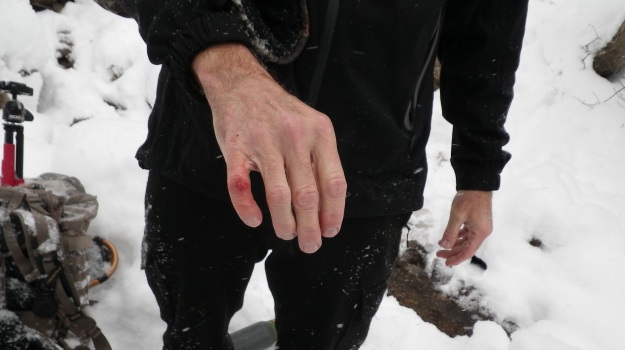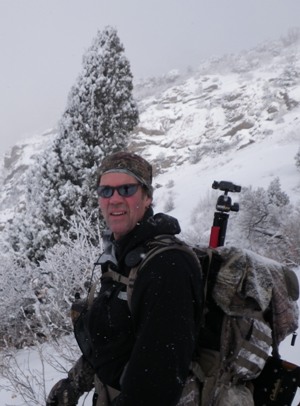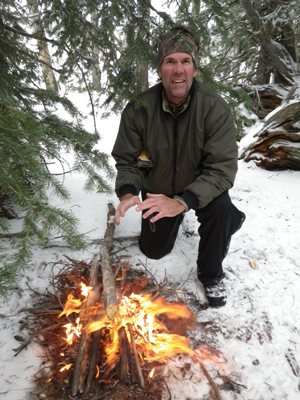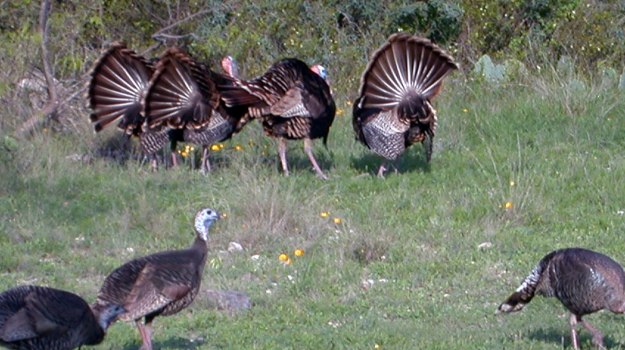by Karl Badger | Western States Regional ProStaff Manager

Winter hit hard and early in the Rocky Mountains this year. Late season hunts were all done in bitter conditions, proving again, that if you're gonna be in the chase, you better be prepared.
The ScoutLook Mossy Oak Weather App, on my iPhone, is the first piece of gear that I reach for before I even climb out of my sleeping bag. It's truly one of the finest pieces of gear that I take with me on my wilderness adventures.
 The ScoutLook features provide the user with world-class weather data. These weather details are accurate to within a few square miles, not just your zip code area.
The ScoutLook features provide the user with world-class weather data. These weather details are accurate to within a few square miles, not just your zip code area.
This data includes:
- Wind direction and speed during a 72 hour period.
- Solunar Times
- Barometric Pressure
- Lunar Phase and sunrise/sunset times
This data not only helps me to plan my hunting approaches and the effects on game activity, but also helps me to keep an eye on the weather conditions.
At elevations above 7,000 feet, an overcast sky can quickly turn to rain and rain can quickly turn to sleet and snow. Wind gusts can be 15-30 miles per hour or stronger and lightning strikes are more frequent. Any of the three can quickly become life threatening.
A sportsman venturing into the woods or climbing to the top of a mountain always needs to keep an eye on the sky.
Just as important as keeping watch on the weather is watching yourself, so you do not make mistakes that can cause accidents, injury and or an illness.
While part of an extreme wilderness hunt is enjoying the solitude and freedom far away from civilization, it does create some real dangers. The biggest risk is that you will not have immediate medical help in case of an accident. Even minor injuries, such as a broken finger, should be given immediate attention or else other health and welfare issues could occur .
 Every wilderness adventurer should have a basic Boy Scout knowledge of how to treat blisters, sprains, burns, lacerations, wounds, altitude sickness, dehydration, hypothermia, diarrhea, and broken bones. Along with that knowledge, a wilderness sportsman needs to carry a first aid kit.
Every wilderness adventurer should have a basic Boy Scout knowledge of how to treat blisters, sprains, burns, lacerations, wounds, altitude sickness, dehydration, hypothermia, diarrhea, and broken bones. Along with that knowledge, a wilderness sportsman needs to carry a first aid kit.
I personally recommend Adventure Medical kit “BigHorn.” Here's why: every Adventure Medical Kit comes organized by needs for specific injuries, packed with the items needed most, including a comprehensive assortment of medications and tools. Each kit also has a Medical Guide containing 220 pages and 120 illustrations of how to treat wilderness injuries.
In addition to first aid skills and heeding the ScoutLook weather forecasts, a mountaineer must also know how to build a fire and construct a wilderness shelter. These combined skills could very well save your life.
The pursuit of our outdoor obsessions should always be done with a respect for the mountains we climb and the woods we hike through. This sense of awareness will keep you better prepared when a challenge presents itself.



























